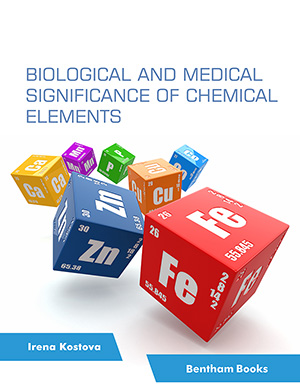Abstract
Background: Urolithiasis as the third most common disorder is defined as stones within the urinary tract. Calcium oxalate is the most common type of stone with a prevalence of 80-85% of cases. There is no drug treatment for urolithiasis, but the use of some stone blockers and inhibitors relaxes the ureter smooth muscles and helps the stone excretion.
Objective: High prevalence and recurrence rates of urolithiasis has encouraged scientists to find new drugs, especially from medicinal plants. Tribulus terrestris is used for the management of urinary calculi in different traditional systems. Therefore, the potential use of T. terrestris in the management of urinary stones has been the subject of this review for the first time.
Methods: The manuscript was prepared by searching the keywords “Tribulus terrestris”, “urolithiasis”, “urinary stone”, and “calcium oxalate” in scientific resources, traditional and modern books, dissertations, and documents.
Results: The results exhibited that T. terrestris fruit aqueous extract had some efficacy in the treatment of urinary calculi by demineralizing the stone, inhibiting the stone formation, increasing urine volume in 24 hrs in animal and human studies, along with protective effects against renal injury due to inhibition of oxidative stress and lipid peroxidation.
Conclusion: All these mechanisms make T. terrestris as an effective treatment for urolithiasis that needs to be evaluated in further clinical studies.
Keywords: Tribulus terrestris, urolithiasis, calcium oxalate monohydrate, renal injury, oxidative stress, urinary calculi.
[PMID: 2329073]
[http://dx.doi.org/10.1097/MNH.0b013e3282f8b34d] [PMID: 18408483]
[http://dx.doi.org/10.1097/PEC.0b013e3182228f10] [PMID: 21730811]
[http://dx.doi.org/10.1155/2018/3068365] [PMID: 29515627]
[http://dx.doi.org/10.1007/s00240-018-1043-0] [PMID: 29392338]
[http://dx.doi.org/10.1089/end.2005.19.759] [PMID: 16190824]
[http://dx.doi.org/10.2147/RRU.S257669] [PMID: 32754452]
[http://dx.doi.org/10.3109/13880208709060906]
[http://dx.doi.org/10.15171/jrip.2016.27] [PMID: 27689108]
[http://dx.doi.org/10.4103/0973-7847.125530] [PMID: 24600195]
[http://dx.doi.org/10.2174/2210315508666181022125243]
[http://dx.doi.org/10.1016/j.ijsu.2016.11.018] [PMID: 27840313]
[http://dx.doi.org/10.1016/0003-9861(73)90125-2] [PMID: 4705431]
[http://dx.doi.org/10.1002/ptr.2650070204]
[http://dx.doi.org/10.1016/0378-8741(94)90069-8] [PMID: 7853865]
[http://dx.doi.org/10.1021/cg501209h] [PMID: 25598742]
[http://dx.doi.org/10.1046/j.1523-1755.1999.00426.x] [PMID: 10231440]
[http://dx.doi.org/10.1007/s00240-007-0114-4] [PMID: 17882411]
[http://dx.doi.org/10.2306/scienceasia1513-1874.2010.36.165]
[http://dx.doi.org/10.1007/s12018-011-9106-6] [PMID: 25045326]
[PMID: 6056282]
[http://dx.doi.org/10.1016/S0378-8741(03)00014-X] [PMID: 12639749]
[http://dx.doi.org/10.1515/hepo-2015-0014]
[PMID: 3717344]
[PMID: 10077881]
[http://dx.doi.org/10.1155/2016/5203801] [PMID: 27965733]
[http://dx.doi.org/10.1159/000082043] [PMID: 15539792]
[http://dx.doi.org/10.1007/s00240-005-0492-4] [PMID: 16292585]
[http://dx.doi.org/10.1007/s00240-002-0286-x] [PMID: 12624656]
[http://dx.doi.org/10.1002/bit.260390310] [PMID: 18600948]
[http://dx.doi.org/10.4103/0971-4065.83727] [PMID: 21886973]
[PMID: 25383321]
[http://dx.doi.org/10.1038/s41598-019-52398-w] [PMID: 30626917]
[http://dx.doi.org/10.1055/s-0029-1185719] [PMID: 19444769]
[http://dx.doi.org/10.1186/1472-6882-13-228] [PMID: 24044655]
[http://dx.doi.org/10.1111/j.1464-410X.1994.tb16576.x] [PMID: 7921929]
[http://dx.doi.org/10.1016/S0031-9422(97)01086-8]
[http://dx.doi.org/10.4038/jnsfsr.v38i3.2308]
[http://dx.doi.org/10.1111/j.1464-410X.1989.tb06004.x] [PMID: 2553195]
[http://dx.doi.org/10.1111/j.1464-410X.1984.tb05384.x] [PMID: 6544608]
[http://dx.doi.org/10.3109/13880209.2014.924019] [PMID: 25471616]
[http://dx.doi.org/10.1016/j.bmc.2004.11.031] [PMID: 15670922]
[http://dx.doi.org/10.1159/000486641] [PMID: 29566362]
[http://dx.doi.org/10.4236/health.2019.116052]
[http://dx.doi.org/10.5897/AJB12.762]
[http://dx.doi.org/10.1007/s13596-019-00381-1]






























